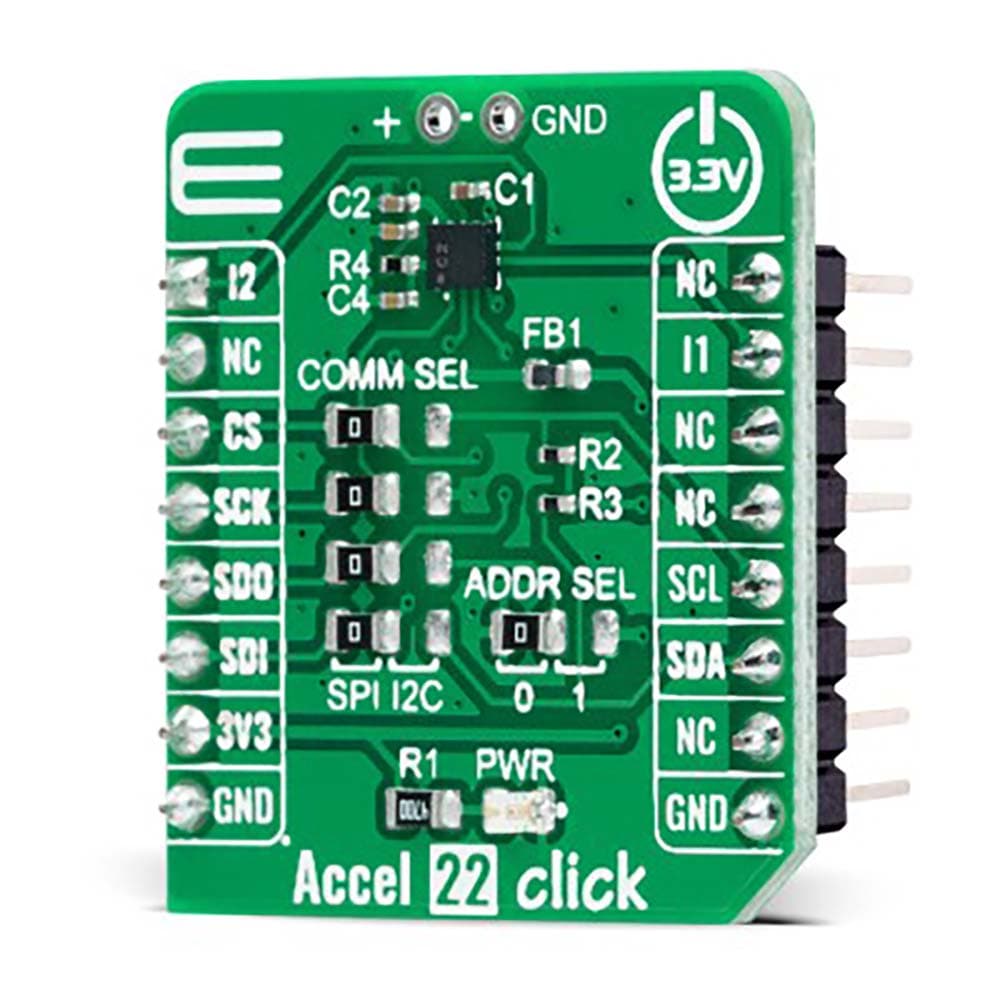
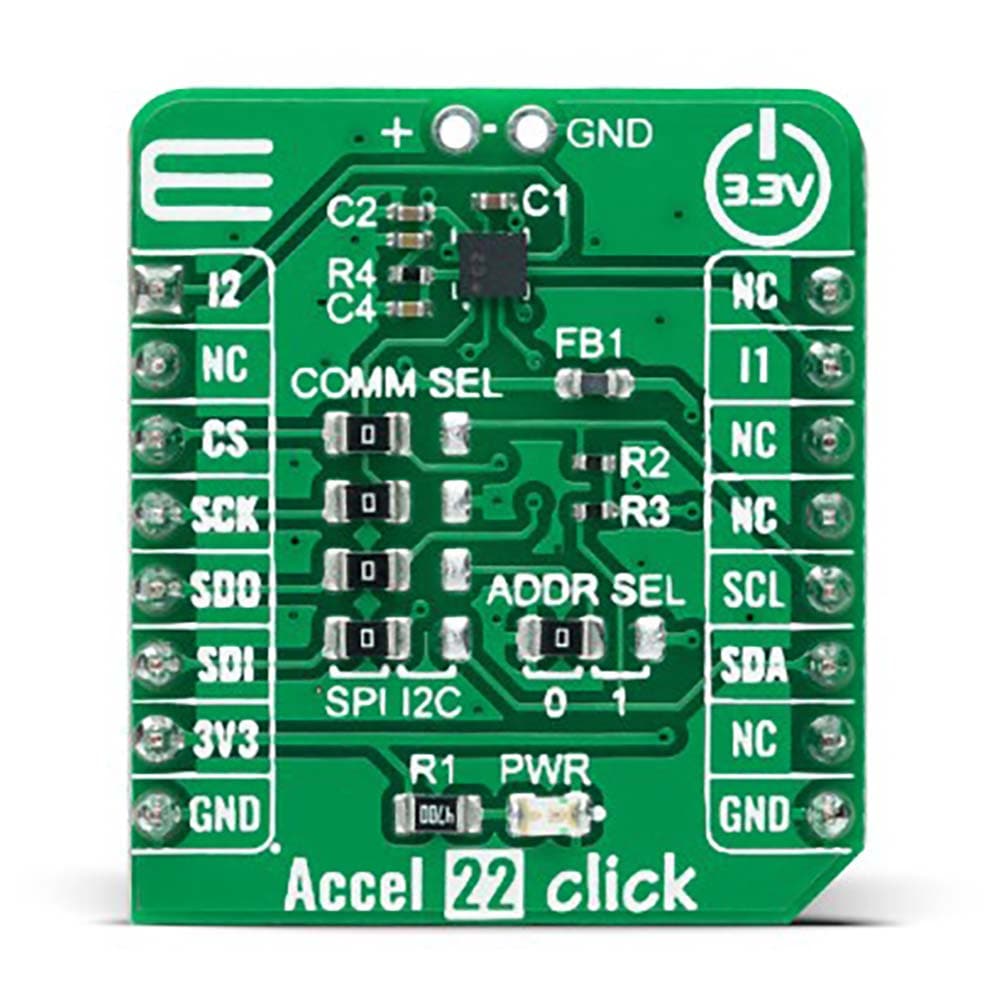
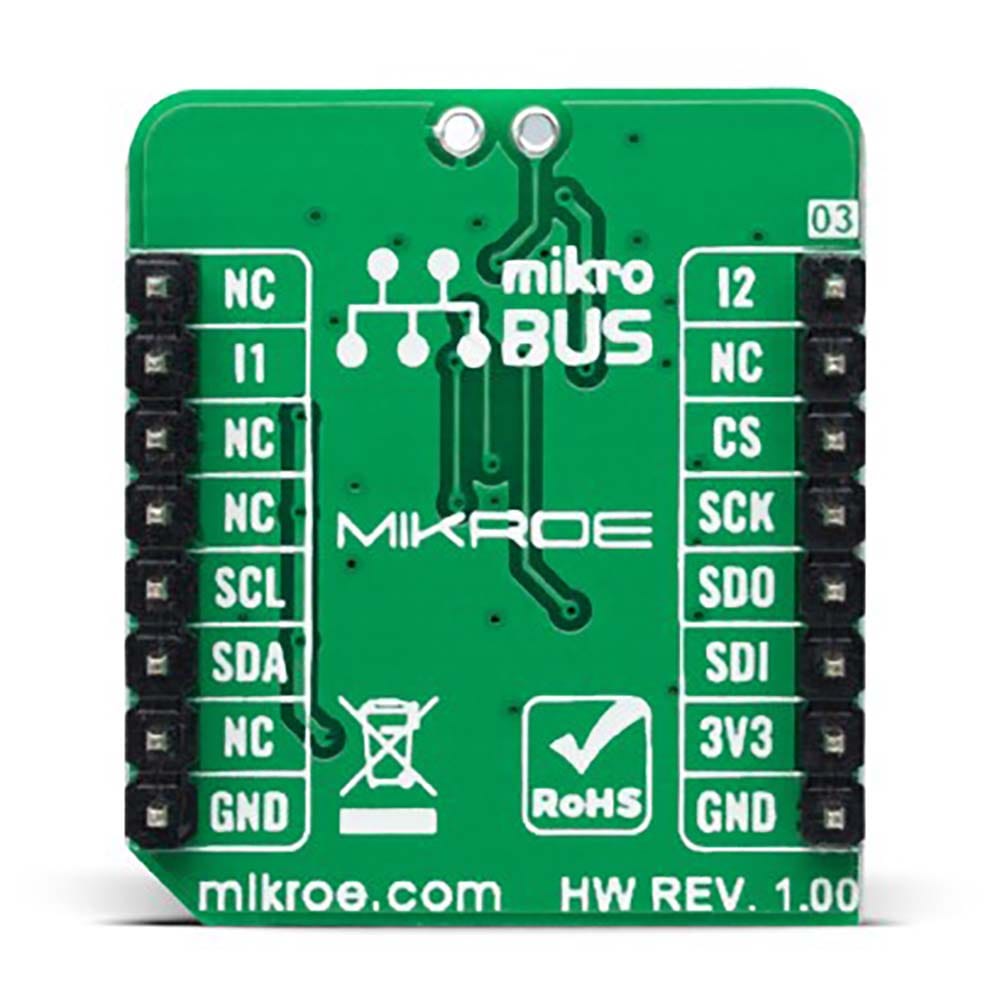
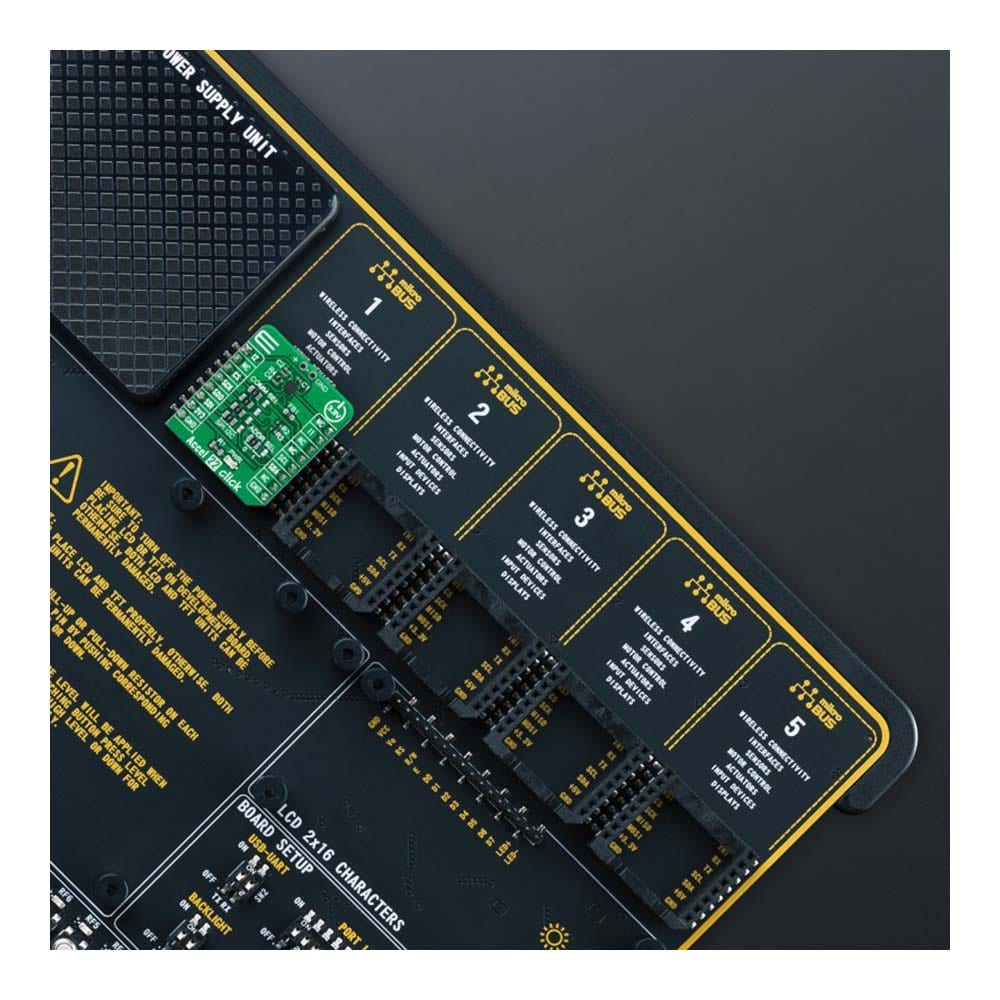
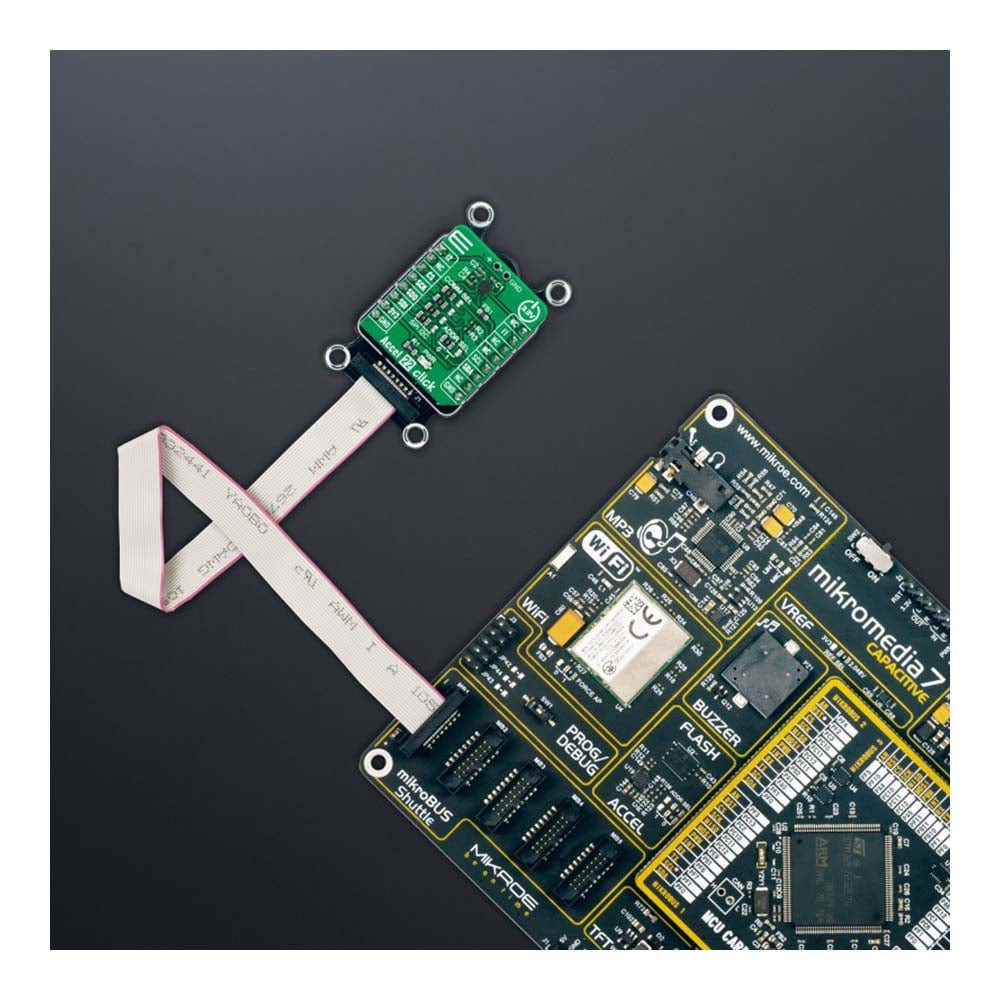
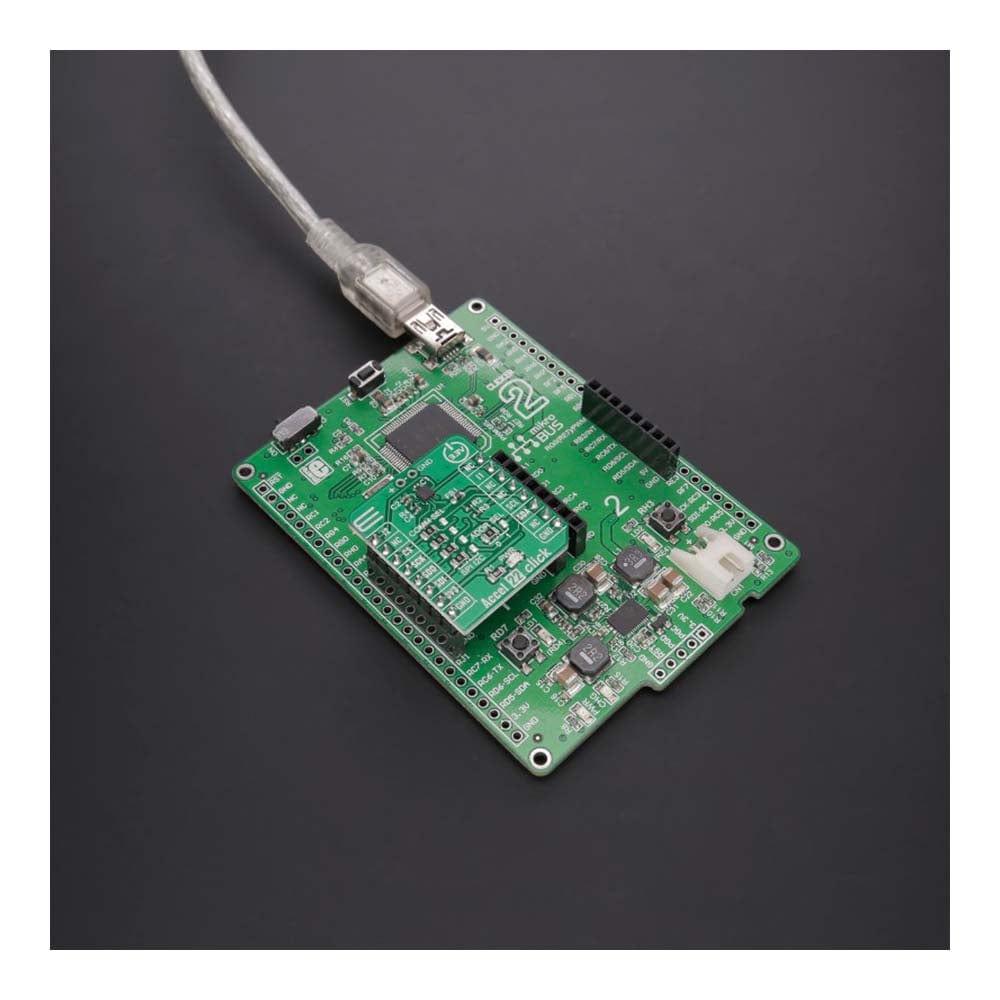
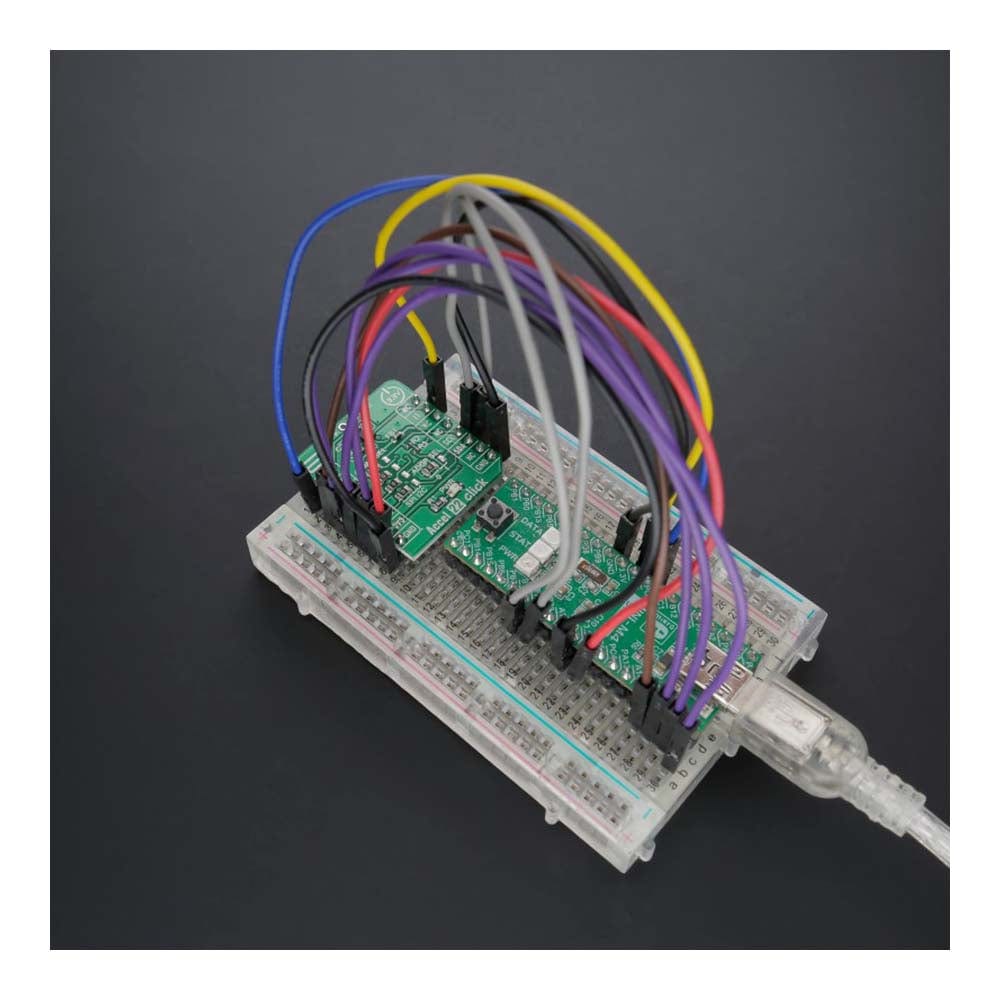
Key Features
Overview
The Accel 22 Click Board™ is a compact add-on board that contains an acceleration sensor. This board features the ADXL367, an ultra-low-power, high-performance three-axis accelerometer from Analog Devices. The ADXL367 allows selectable full-scale acceleration measurements in ranges of ±2g, ±4g, and ±8g in three axes, with a resolution of 0.25 mg/LSB on the ±2g range, alongside a configurable host interface that supports both SPI and I2C serial communication. This device combines a 3-axis MEMS accelerometer, a temperature sensor, and a 14-bit analog-to-digital converter (ADC) to synchronize an external analog signal conversion. This Click board™ is suitable for various applications such as motion-activated functions and user interfaces and many asset monitoring functions in a wide range of industrial applications.
The Accel 22 Click Board™ is supported by a mikroSDK compliant library, which includes functions that simplify software development. This Click board™ comes as a fully tested product, ready to be used on a system equipped with the mikroBUS™ socket.
Downloads
Das Accel 22 Click Board™ ist eine kompakte Zusatzplatine, die einen Beschleunigungssensor enthält. Diese Platine verfügt über den ADXL367, einen extrem stromsparenden, leistungsstarken dreiachsigen Beschleunigungsmesser von Analog Devices. Der ADXL367 ermöglicht wählbare Vollskalen-Beschleunigungsmessungen in den Bereichen ±2 g, ±4 g und ±8 g in drei Achsen mit einer Auflösung von 0,25 mg/LSB im Bereich ±2 g sowie eine konfigurierbare Hostschnittstelle, die sowohl SPI- als auch I2C-Seriellkommunikation unterstützt. Dieses Gerät kombiniert einen 3-achsigen MEMS-Beschleunigungsmesser, einen Temperatursensor und einen 14-Bit-Analog-Digital-Wandler (ADC) zur Synchronisierung einer externen analogen Signalumwandlung. Dieses Click Board™ eignet sich für verschiedene Anwendungen wie bewegungsaktivierte Funktionen und Benutzeroberflächen sowie viele Anlagenüberwachungsfunktionen in einer Vielzahl von industriellen Anwendungen.
Das Accel 22 Click Board™ wird von einer mikroSDK-kompatiblen Bibliothek unterstützt, die Funktionen enthält, die die Softwareentwicklung vereinfachen. Dieses Click Board™ wird als vollständig getestetes Produkt geliefert und ist bereit für den Einsatz auf einem System, das mit der mikroBUS™-Buchse ausgestattet ist.
| General Information | |
|---|---|
Part Number (SKU) |
MIKROE-4896
|
Manufacturer |
|
| Physical and Mechanical | |
Weight |
0.02 kg
|
| Other | |
Country of Origin |
|
HS Code Customs Tariff code
|
|
EAN |
8606027388927
|
Warranty |
|
Frequently Asked Questions
Have a Question?
Be the first to ask a question about this.







